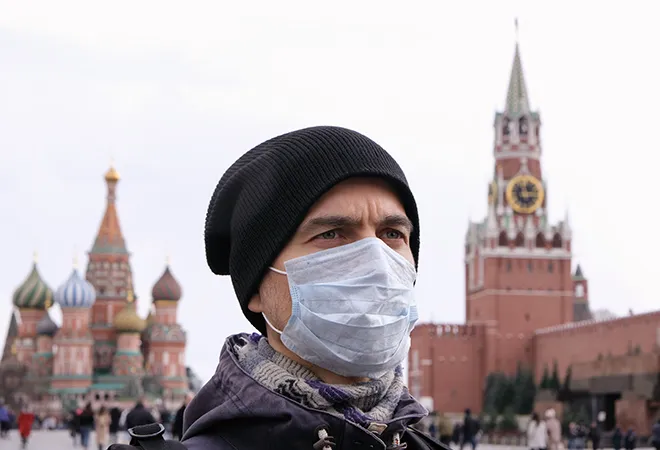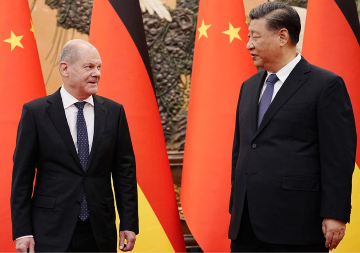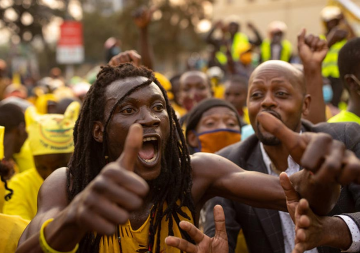
The coronavirus pandemic has brought a lot of changes to our normal lives worldwide. Now the entire world faces a heavy challenge of overcoming the global health crisis - just before it comes very soon to new economic and financial crises and the tasks of the social and global connectivity recovery. What are the limits and how great will consequences be?
Russia has been a country that has now seen the third wave of the COVID-19 pandemic and most experts and officials say that the peak will come in May. At the same time nobody can forecast how painful the coming peak will be for the Russian society and economy. The whole country is mobilized and tries to mitigate the effects with the package of preventive measures in social and economic spheres.
Talking about the preventive measures, first, in February, Russia closed its borders with China. Then, when the Italy became the sad pioneer of the second European epidemic wave and after some considerations and local closures Russia decided to close the state borders fully. Officially they are closed up to May but, most likely, the government will prolong the regime. Now Russians only (or, in some cases, post-Soviet citizens) can enter the country on emergency flights from abroad specially organized with this purpose.
The next step Russia has taken was initiating the non-work week for everybody. Now it has turned out to be the non-work month with probable prolongation. In other words, those are the measures of the gradual lockdown. First, the government closed cultural sites and educational institutions and gave people recommendations to work distantly. Then, officially all institutions and enterprises had to go for holidays while saving the salaries for employees. Early on the spontaneous holidays were declared for the first April week, now it may last until the middle of May or even longer.
Holidays could not be just time for leisure. After two days of the holiday time the regime of the obligatory self-isolation came into force. With this, people can go only to groceries, pharmacies, hospitals or to work if they still have to. Other additional measures depend on the particular region. For instance, in many places including Moscow it is necessary to get a special pass to use private or public transport. You have to possess a very strong reason not to stay home.
Nevertheless, the general situation seems quite stable: the public health system is not too much overloaded, lethality grade is really low (0,7–0,8%). 40-45% of tested infected people do not have any symptoms at all. Polls show that the notable part of Russians are afraid to get infected so they tend to behave quite responsibly and cautiously.
Having said that, the society is pretty critical because of the lack of trust in media and governmental decisions and controversial recommendations of the World Health Organization. People in those regions where the number of the infected cases is much lower are annoyed with the tough restrictions. We have arrived in a time where nobody in the world can give clear answers and give right prescriptions what to do -even science still can’t.
Gradual measures taken by the Russian government could play a role of sedative for the society. The measures get stricter only with the rise of danger. But, unfortunately, they can’t help economic losses, closure of small and medium businesses and rise in unemployment that inevitably makes the society more stressed and tense. And the Russian government is still far from the discussion of lifting the lockdown measures.
At the current moment the epicenter of the infection in Russia is Moscow and Moscow region. All the other regions may live through their peaks later, but as Russia is highly concentrated around life in Moscow, the situation in the capital will be crucial for further measures and level of freedom to move inside the big and wide Russian Federation.
Although in the post-Soviet times in Russia the healthcare reforms were very inconsistent and the sphere strongly lacked finances. It managed to save the Soviet heritage with the help of available medicine and the strong school of epidemiology which now help to overcome those times easier. The Soviet government from time to time had to fight epidemics emerging out of the Central Asia, Caucasus and the Caspian region. In 1979, it had to overcome the outbreak of highly dangerous Siberian plague in Sverdlovsk (now the city of Ekaterinburg).
But, of course, the society in Russia as anywhere else tends to perceive such situations as the tales of the remote past, and the modern times cannot bring back the challenges of the medieval plagues and some dangers of bad hygiene. That is why it is widely seen as something very unique and ultra-new.
The story of the COVID-19 epidemic has shown not only Russia but to the whole global community how infirm and friable our day-to-day life is. Globalization creates interdependence and sensitivity to any fundamental change in one point on the world map. The epidemic is even more than that because of its propagation speed and geography.
Certainly, it is very premature to affirm that the world will never be the same. The world has faced many epidemics and global threats – even more lethal and dangerous. We will certainly witness serious shifts and changes in the society and international relations which can further raise many ethical questions of tomorrow. We definitely shouldn’t ignore them now and drop guard.
The views expressed above belong to the author(s). ORF research and analyses now available on Telegram! Click here to access our curated content — blogs, longforms and interviews.




 PREV
PREV

